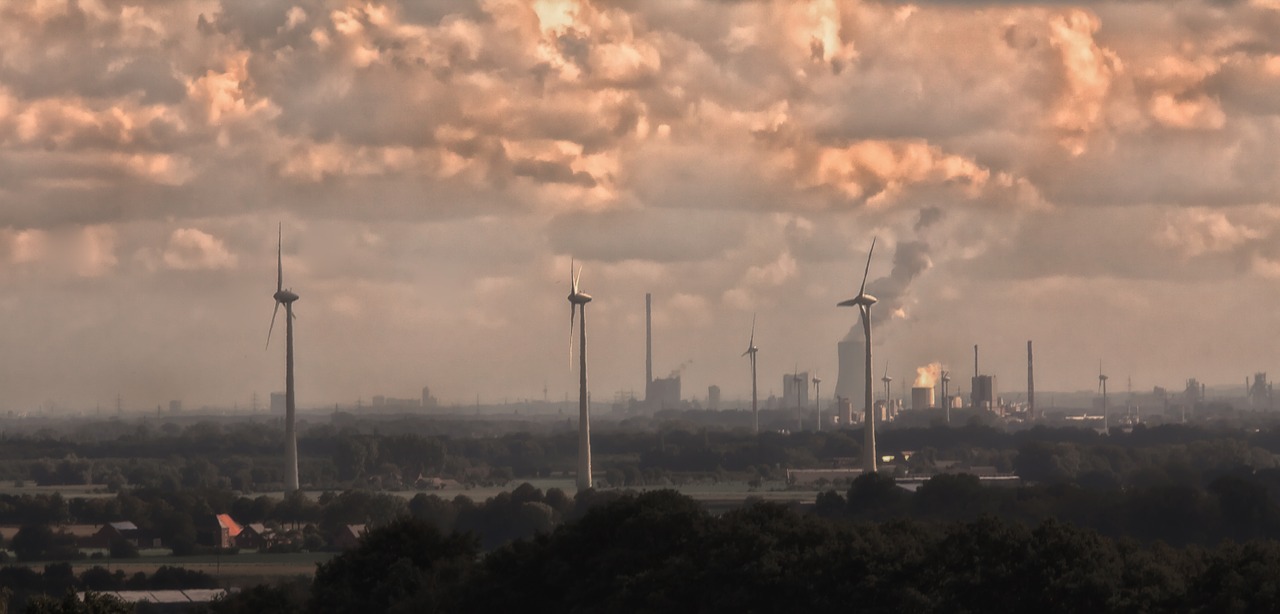Corporate Responsibility
Can we improve our practices, as well as our products? 20th November 2017
By our Editorial Team
Chemical companies are showing great innovation in the development of greener, sustainable products. However, the industry’s o

Chemical companies are showing great innovation in the development of greener, sustainable products. However, the industry’s own practices may be falling short, as a recent report reveals a failure by many major companies to meet Paris Agreement goals.
The chemicals industry is a large energy user, and large-scale chemical plants and integrated facilities have been targeting energy efficiency improvements for a number of years. Improved energy efficiency has obvious benefits in reducing costs but, perhaps even more importantly in the modern world, it offers broader benefits in terms of sustainability.
The industry covers a diverse group of companies, from petrochemical companies, diversified companies with business models based on horizontal and vertical integration, and specialty companies servicing a range of end markets from nutrition, healthcare, electronics and automotives. In fact, nearly all manufactured products (95%) rely on chemicals, in one way or another.
Much innovation in the chemicals industry is driven by sustainability. A trend for developing ‘greener’ alternatives for conventional ingredients is rife across all sectors, and leaders in the industry are investing in projects – such as the one involving BASF and bse Engineering that transforms excess electricity and off-gas CO2 into stored methanol in an economically-viable way.1 When generating electricity from renewable sources such as in wind or solar power, excess current often cannot be used, but cannot be stored. Effective usage of this excess has been a decisive factor in making renewable energy economically viable. Meanwhile, reduction of CO2 from industrial plants is an important target set in the context of the 2015 Paris Climate Protection Agreement. The new process solves both these challenges, enabling the sustainable use of current and CO2 with small-scale, delocalized production units built where the two components are generated (near power plants using renewable sources of energy, as well as industrial plants producing CO2).
Despite individual breakthroughs such as this, it is thought that – as a whole – the chemicals industry will struggle to ever fully decarbonize if it doesn’t make rapid and significant changes to its own [often] highly polluting processes.
CDP – a not-for-profit organization that runs the global disclosure system for investors, companies, cities, states and regions to manage their environmental impacts – analysed 22 of the largest global chemical companies. According to their report ‘Catalyst for change’, released in October 2017,2 these companies had a total market capitalization of US$626 billion and, together, were responsible for 276 million metric tonnes of CO2 emissions per year (a quarter of the whole industry’s emissions).
CDP based their report on four key metrics aligned with the recommendations from Mark Carney’s Task Force on Climate-related Financial Disclosures (TCFD):
1. Transition risks: exposure based on emissions intensity and energy
2. Physical risks: use and withdrawal of water, and water quality
3. Transition opportunities: progress and strategy in shifting towards a low carbon
economy
4. Climate governance and strategy: governance frameworks including emissions
reduction targets and alignment of governance and remuneration structures with low carbon objectives.
According to the report,2 as the TCFD recommendations become more mainstream, investors will increasingly expect chemical companies to disclose how they are adjusting their business models to manage physical and transition risks, while taking advantage of the opportunity to generate revenue from the global transition to a low-carbon economy.
In summary, the CDP’s report revealed that the chemicals industry is making progress on climate risk, but that rapid process innovations will be required in order for them to have any chance of aligning with the below 2oC goal set out by the Paris Agreement.
Paul Simpson, CEO of CDP, said “As both a large energy user itself and a crucial part of other industrial supply chains the chemicals industry is an important, but often overlooked, sector when it comes to environmental impact. Today’s analysis shows it’s moving in the right direction across several climate metrics with encouraging signs on annual emissions and R&D, but it needs to go further and faster to invest in the technologies that will deliver efficiency and emissions improvements. Ultimately it needs to set and achieve more ambitious environmental targets to reach a tipping point that both catalyses progress towards the Paris Agreement goals and directly improves the bottom line.”
The report includes a league table of the 22 companies analysed by CDP (Table 1).2 According to this ranking, AkzoNobel, DSM and Johnson Matthey are the best performing companies on climate-related metrics, with Dow Chemical, LyondellBasell and Formosa Plastics ranking lowest.
Table 1. CDP’s summary league table for chemical companies.2
|
Rank
|
Company
|
2016 emissions*
|
Managing transition risks
|
Managing physical risks
|
Transition opportunities
|
Climate governance and strategy
|
|
1
|
AkzoNobel
|
3.7
|
B
|
A
|
A
|
A
|
|
2
|
DSM
|
1.5
|
B
|
B
|
B
|
A
|
|
3
|
Johnson Matthey
|
0.5
|
B
|
A
|
B
|
C
|
|
4
|
DuPont
|
6.3
|
B
|
C
|
B
|
C
|
|
5
|
BASF
|
20.8
|
C
|
B
|
B
|
C
|
|
6
|
Sumitomo Chemical
|
6.5
|
B
|
C
|
C
|
C
|
|
7
|
PPG
|
1.8
|
A
|
C
|
C
|
D
|
|
8
|
Evonik
|
6.4
|
C
|
C
|
B
|
C
|
|
9
|
Braskam
|
10.2
|
C
|
A
|
D
|
B
|
|
10
|
LG Chem
|
9.1
|
C
|
B
|
C
|
B
|
|
11
|
Air Liquide
|
25.2
|
C
|
D
|
B
|
C
|
|
|
DowDuPont**
|
41.8
|
|
|
|
|
|
12
|
Toray
|
5.6
|
B
|
D
|
D
|
C
|
|
13
|
Mitsubishi Chemical
|
14.5
|
C
|
B
|
C
|
D
|
|
14
|
Shin-Etsu
|
6.2
|
C
|
C
|
C
|
D
|
|
15
|
Umicore
|
0.7
|
B
|
D
|
D
|
E
|
|
16
|
Praxair
|
21.2
|
D
|
C
|
B
|
C
|
|
17
|
Solvay
|
13.2
|
C
|
D
|
D
|
B
|
|
18
|
Linde
|
25.8
|
D
|
B
|
C
|
C
|
|
19
|
Air Products
|
30.2
|
E
|
C
|
C
|
B
|
|
20
|
Dow
|
35.4
|
D
|
D
|
C
|
C
|
|
21
|
LyondellBasell
|
21.7
|
E
|
E
|
E
|
D
|
|
22
|
Formosa Plastics
|
9.0
|
E
|
D
|
E
|
D
|
*2016 emissions: direct GHG emissions, electricity indirect GHG emissions and CO2 (million tonnes)
**Dow and DuPont merged to form DowDuPont in September 2017; for this league table, CDP calculated average data
Carole Ferguson, Head of Investor Research at CDP said: “The chemical sector’s significant carbon footprint means it is not just high emitters like petrochemicals that are exposed to the impacts of the low carbon transition but the sector as whole… More transparency and tangible commitments to low carbon initiatives will be key to assess who the future industry leaders will be.”
In September 2017, Dow and DuPont merged to form DowDupont. From the perspective of the current study, this was interesting because DuPont ranked high (in the top 5) in the CDP’s league table, while Dow was in the bottom three. Combined, the average scores of the two individual companies gave the newly-formed DowDupont a theoretical placing of number 11 in the league table.
This year, AkzoNobel stood out in the industry through its commitment to decarbonization initiatives and as one of only two of the assessed companies with a science-based target (the other being LG Chem), Ferguson explained. AkzoNobel was the only company with a commitment for zero carbon by 2050. However, she cautioned that long-term investors will increasingly look for all chemical companies to adjust their business strategies in line with more ambitious emissions reduction targets and a rise in carbon pricing schemes globally.
References
- BASF. Press release, 24th August 2017.
- Ferguson C et al. Catalyst for change. CDP UK, October 2017.



